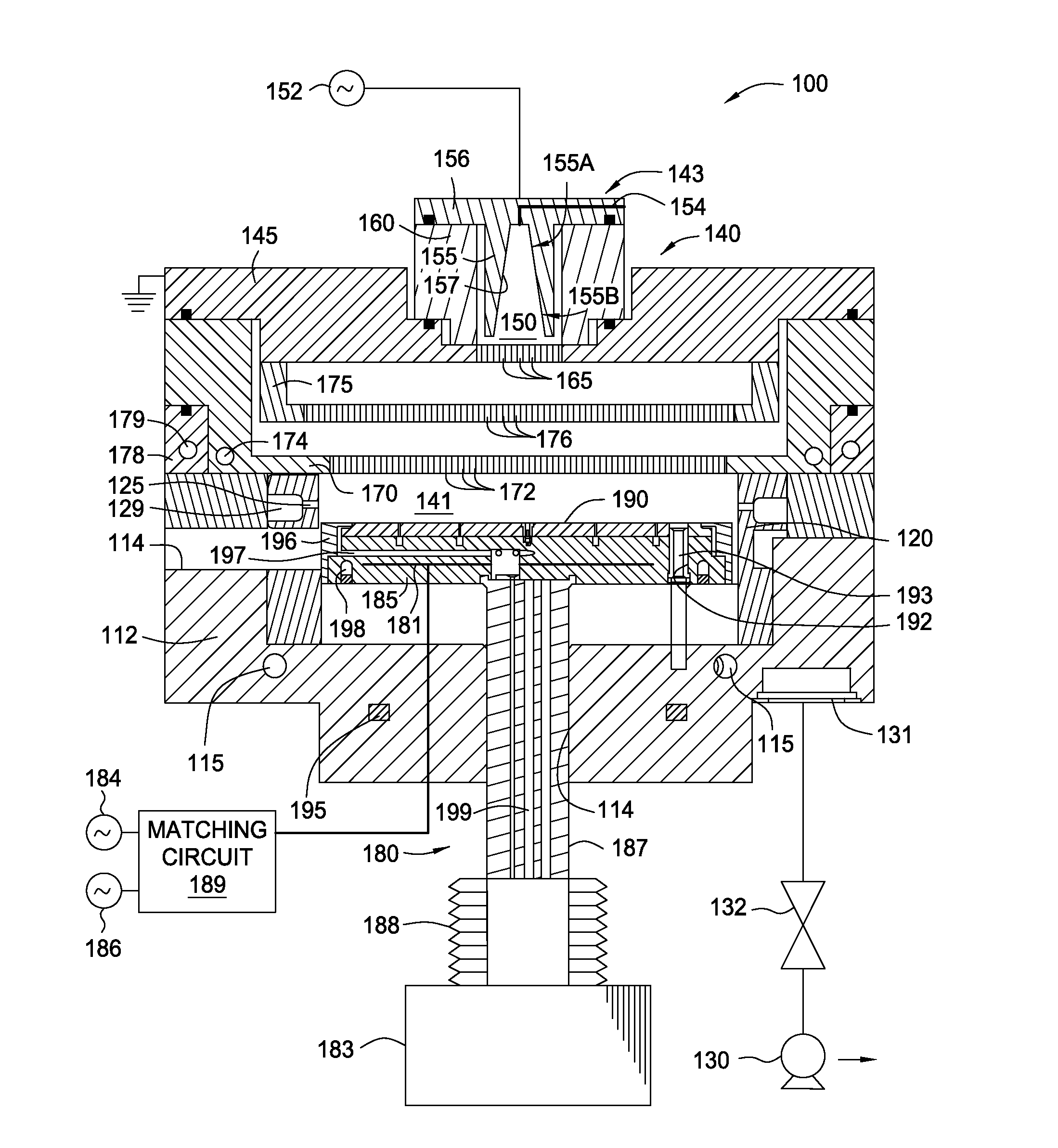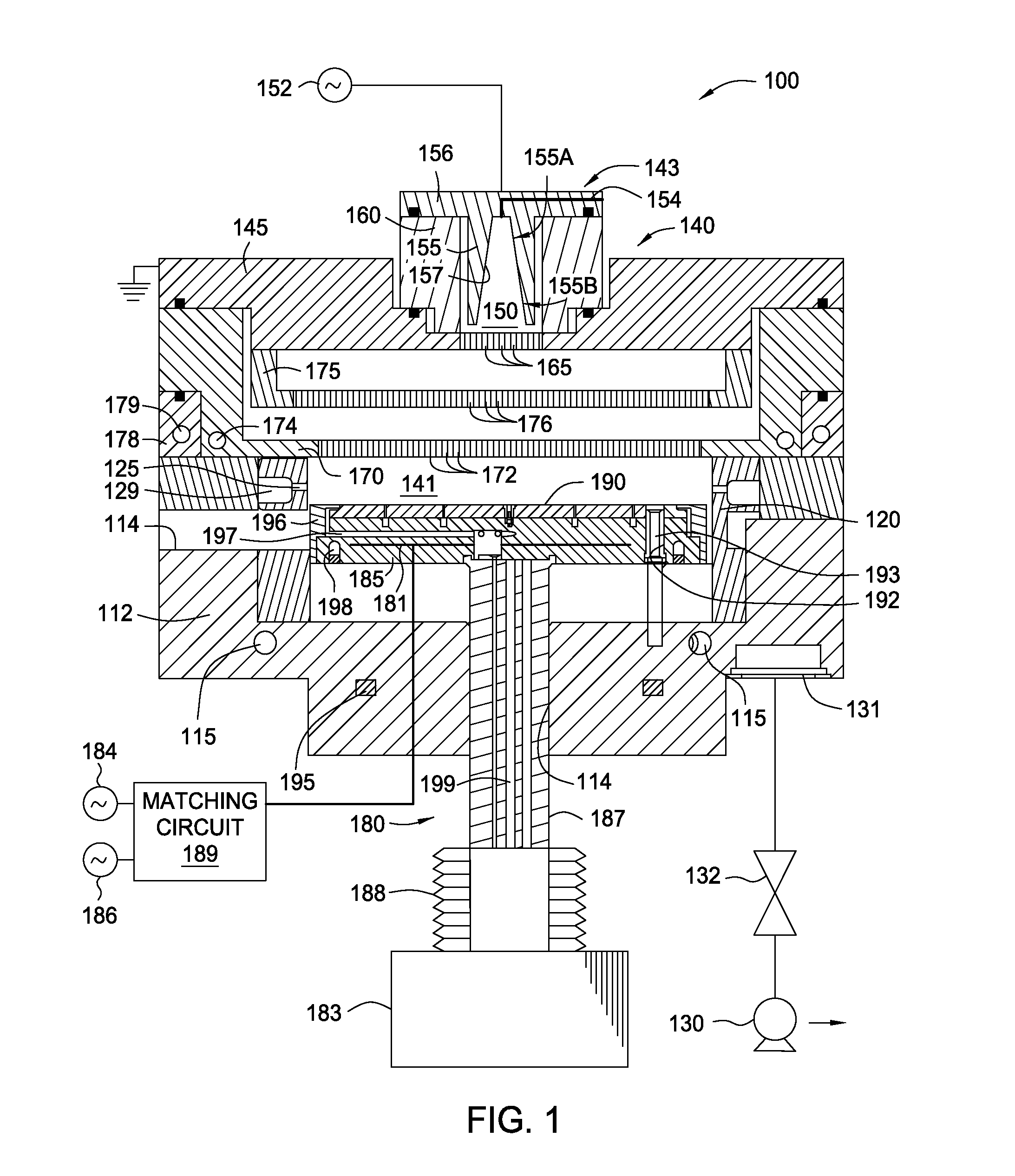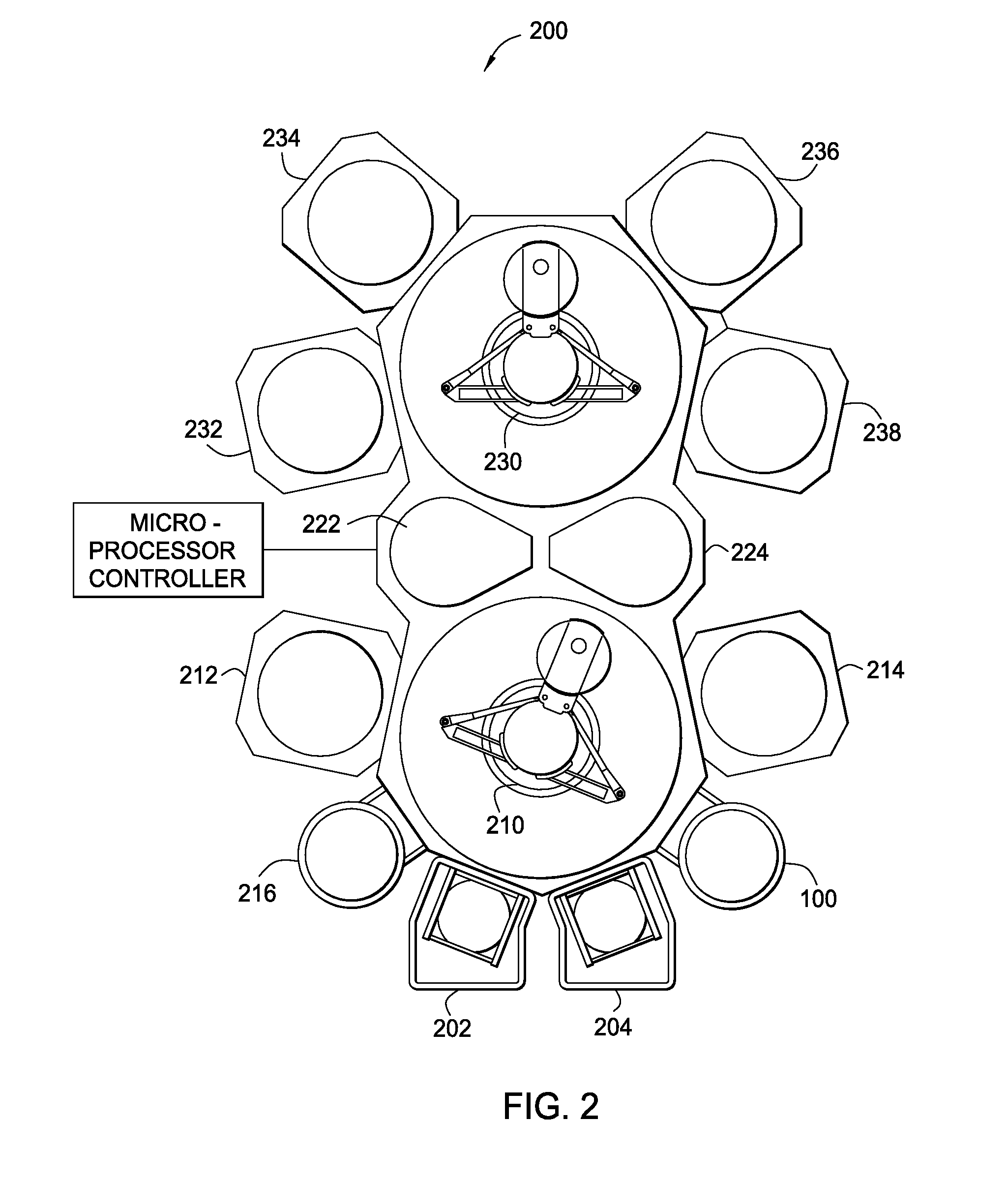Method for stabilizing an interface post etch to minimize queue time issues before next processing step
a technology of queue time and interface, which is applied in the direction of semiconductor devices, electrical equipment, electric discharge tubes, etc., can solve the problems of inoperable circuit, undesirable metal diffusion into the dielectric bulk insulating material, and degrade the overall performance of the integrated circui
- Summary
- Abstract
- Description
- Claims
- Application Information
AI Technical Summary
Benefits of technology
Problems solved by technology
Method used
Image
Examples
Embodiment Construction
[0021]Methods for etching a dielectric barrier layer followed by an interface protection layer deposition process are disclosed herein which provide an etching process with high etching selectivity and interface protection after the etching process. In one embodiment, the dielectric barrier layer etching process includes using a low temperature etching process to selectively etching the dielectric barrier layer without over-etching to an underlying conductive layer. An interface protection layer is subsequently performed to protect the underlying conductive layer exposed after the dielectric barrier layer etching process. By utilizing an etching process with high etching selectivity along with the deposition of an interface protection layer after etching, a good interface control may be obtained. Additionally, Q-time control prior to performing a subsequent process may be extended with minimum oxide or contamination generation, thereby increasing manufacturing flexibility without de...
PUM
| Property | Measurement | Unit |
|---|---|---|
| temperature | aaaaa | aaaaa |
| RF bias power | aaaaa | aaaaa |
| temperature | aaaaa | aaaaa |
Abstract
Description
Claims
Application Information
 Login to View More
Login to View More - R&D
- Intellectual Property
- Life Sciences
- Materials
- Tech Scout
- Unparalleled Data Quality
- Higher Quality Content
- 60% Fewer Hallucinations
Browse by: Latest US Patents, China's latest patents, Technical Efficacy Thesaurus, Application Domain, Technology Topic, Popular Technical Reports.
© 2025 PatSnap. All rights reserved.Legal|Privacy policy|Modern Slavery Act Transparency Statement|Sitemap|About US| Contact US: help@patsnap.com



